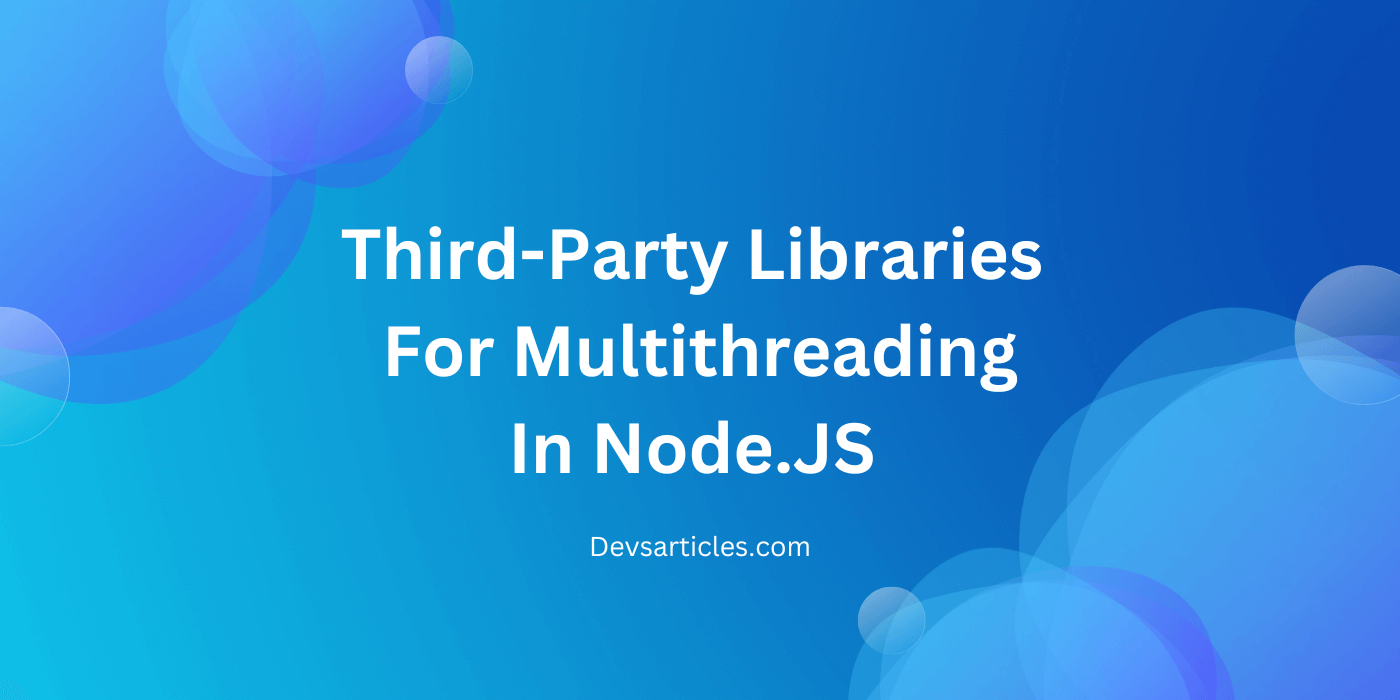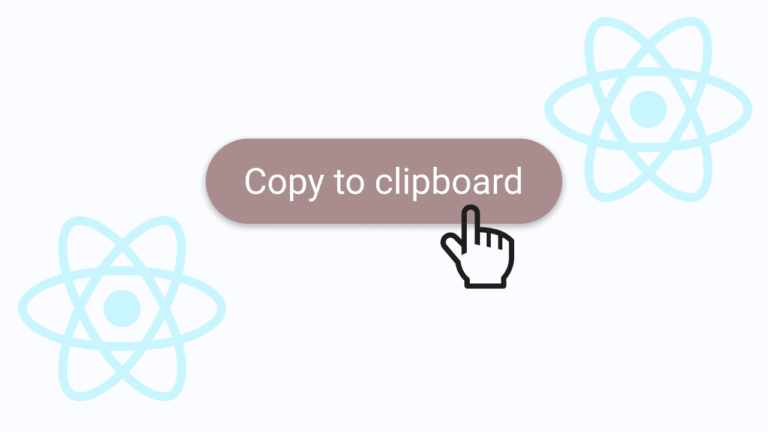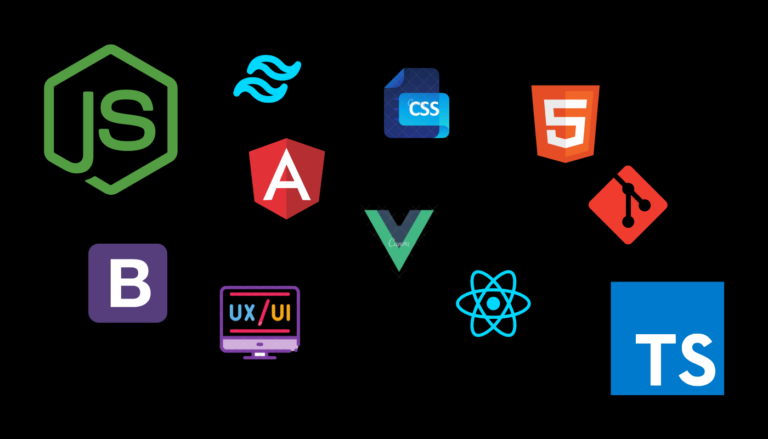Exploring Third-party multithreading Libraries for Node.js: A Comprehensive Guide

Introduction
Hey there, Node.js enthusiasts! Are you ready to take your applications to the next level with the power of multithreading in Node.js? While Node.js is fantastic with its event-driven architecture and built-in options like Worker Threads, Child Processes, and the Cluster module, sometimes you might need a little extra boost. That’s where third-party multithreading libraries come into play. In this guide, we’ll dive deep into some popular libraries that can help you make the most of multithreading in Node.js.
Table of Contents
Why Use Third-party Libraries?
Before we jump into the libraries, let’s talk about why you might want to use a third-party library when Node.js already has multithreading options. Here are some compelling reasons:
- Simplified APIs: These libraries often provide easier-to-use interfaces, making multithreading more accessible to developers of all skill levels.
- Additional features: Some libraries offer functionalities not available in built-in modules, giving you more tools to work with.
- Cross-platform compatibility: Certain libraries work in both Node.js and browsers, allowing you to write code that runs in multiple environments.
- Performance optimizations: Many libraries are fine-tuned for specific use cases, potentially offering better performance than generic solutions.
- Community support: Popular libraries often have active communities, providing support, documentation, and regular updates.
Popular Third-party Multithreading Libraries
Let’s explore some of the most popular libraries that can enhance your multithreading capabilities in Node.js:
1. Parallel.js
Parallel.js is a library that simplifies parallel processing in JavaScript. It’s designed to work seamlessly in both Node.js and browser environments, making it a versatile choice for developers.
Key features:
- Simple API for parallel operations
- Works with web workers in browsers
- Supports map and reduce operations
- Automatic work distribution across available cores
const Parallel = require('paralleljs');
const p = new Parallel([1, 2, 3, 4, 5]);
p.map(x => x * 2).then(results => {
console.log(results); // [2, 4, 6, 8, 10]
});Parallel.js is particularly useful when you have data-parallel tasks, where the same operation needs to be performed on multiple data points independently.
2. Threads.js
Threads.js provides a straightforward way to create and manage worker threads in Node.js. It’s designed to make multithreading feel more natural in JavaScript, with a focus on ease of use and flexibility.
Key features:
- Promise-based API for intuitive async programming
- Automatic thread pool management
- Support for transferable objects
- Easy error handling and thread termination
const { spawn, Thread, Worker } = require('threads');
const worker = await spawn(new Worker('./worker'));
const result = await worker.doWork(10);
console.log(result);
await Thread.terminate(worker);Threads.js shines when you need fine-grained control over your worker threads while maintaining a clean and easy-to-read codebase.
3. Workerpool
Workerpool offers a pool of workers for both Node.js and browsers. It’s great for offloading heavy tasks to keep your main thread responsive, and its flexibility makes it suitable for a wide range of applications.
Key features:
- Dynamic pool size to adapt to workload
- Supports both synchronous and asynchronous tasks
- Works in Node.js and browsers
- Ability to terminate running tasks
const workerpool = require('workerpool');
const pool = workerpool.pool();
pool.exec(function(x) {
return x * x;
}, [10])
.then(function(result) {
console.log('Result:', result); // 100
})
.catch(function(err) {
console.error(err);
});
pool.terminate();Workerpool is particularly useful when you have a varying number of tasks that need to be processed in parallel, as it can dynamically adjust the number of workers based on the workload.
4. Piscina
Piscina is a fast, lightweight worker thread pool implementation for Node.js. It’s designed for high performance and low overhead, making it an excellent choice for applications that require maximum efficiency.
Key features:
- High performance with minimal overhead
- Minimal API surface for ease of use
- Supports worker arguments and return values
- Automatic load balancing across worker threads
const Piscina = require('piscina');
const piscina = new Piscina({
filename: path.resolve(__dirname, 'worker.js')
});
const result = await piscina.run({ a: 4, b: 6 });
console.log(result); // 10Piscina is ideal for applications that need to process a large number of small tasks quickly, such as handling numerous API requests or performing many small computations.
5. Node-webworker-threads
This library brings the Web Workers API to Node.js, allowing you to use a familiar interface for multithreading if you’re coming from a browser JavaScript background.
Key features:
- Web Worker-like API for consistency with browser code
- Shared memory support for efficient data sharing
- Easy migration from browser code to Node.js
const Worker = require('webworker-threads').Worker;
const worker = new Worker(function() {
this.onmessage = function(event) {
postMessage('Hello ' + event.data);
};
});
worker.onmessage = function(event) {
console.log('Worker said:', event.data);
};
worker.postMessage('World');Node-webworker-threads is particularly useful if you’re porting an application from the browser to Node.js and want to maintain a similar multithreading structure.
How These Libraries Enhance Node.js Multithreading
While Node.js is renowned for its event-driven architecture, these libraries build upon the existing multithreading capabilities like Worker Threads and Child Processes. They provide abstraction layers that make it easier to work with processes and threads in Node.js, often offering features that complement the built-in options.
For instance, Parallel.js and Workerpool extend the multithreading concept to browser environments, allowing you to write code that works both in Node.js and web browsers. This can be particularly useful for isomorphic applications or when you want to share logic between server-side and client-side code.
Threads.js and Piscina focus on optimizing Worker Threads usage, providing higher-level APIs and improved performance. They abstract away some of the complexities of managing worker threads directly, allowing you to focus on your application logic rather than the intricacies of thread management.
These libraries also often provide additional features not found in the built-in Node.js modules. For example, some offer more sophisticated work distribution algorithms, better error handling, or easier ways to share data between threads.
Choosing the Right Library
Selecting the best library depends on your specific needs and the nature of your application. Here are some guidelines:
- For simple parallel processing, especially if you need browser compatibility: Parallel.js
- For a Promise-based Worker Threads interface with good abstraction: Threads.js
- For flexible worker pools that adapt to varying workloads: Workerpool
- For high-performance thread pools with minimal overhead: Piscina
- For Web Worker-like functionality in Node.js, especially when porting browser code: Node-webworker-threads
Integration with Node.js Event-Driven Architecture
It’s important to note that these multithreading libraries work alongside Node.js’s event-driven architecture, not as a replacement for it. They’re particularly useful for CPU-bound tasks that could otherwise block the event loop.
For example, you might use the event loop for handling I/O operations and client requests, but offload heavy computations to a thread pool managed by one of these libraries. This approach allows you to maintain the responsiveness of your Node.js application while still performing intensive operations.
Conclusion
Third-party multithreading libraries in Node.js offer powerful tools to boost your application’s performance and scalability. They build upon Node.js’s event-driven architecture and existing multithreading options to provide easier-to-use APIs and additional features.
Whether you’re dealing with CPU-intensive tasks, need to offload work from the main thread, or want to leverage multi-core processors more effectively, these libraries have got you covered. By understanding their strengths and use cases, you can choose the right tool for your specific needs and take your Node.js applications to the next level.
Remember, the key to effective multithreading is not just about using these libraries, but about understanding your application’s needs and choosing the right tool for the job. With the knowledge you’ve gained from this guide, you’re now better equipped to make informed decisions about multithreading in your Node.js applications.
FAQs
Why should I use a third-party library instead of Node.js built-in multithreading options?
Third-party libraries often provide simpler APIs, additional features, and optimizations for specific use cases. They can make multithreading more accessible and efficient, especially for complex scenarios.
Are these libraries compatible with all versions of Node.js?
Compatibility varies by library. Always check the library’s documentation for version requirements. Most modern libraries support Node.js versions 12 and above.
Can I use these libraries in a browser environment?
Some libraries like Parallel.js and Workerpool are designed to work in both Node.js and browser environments. Others are Node.js-specific. Check each library’s documentation for browser compatibility.






